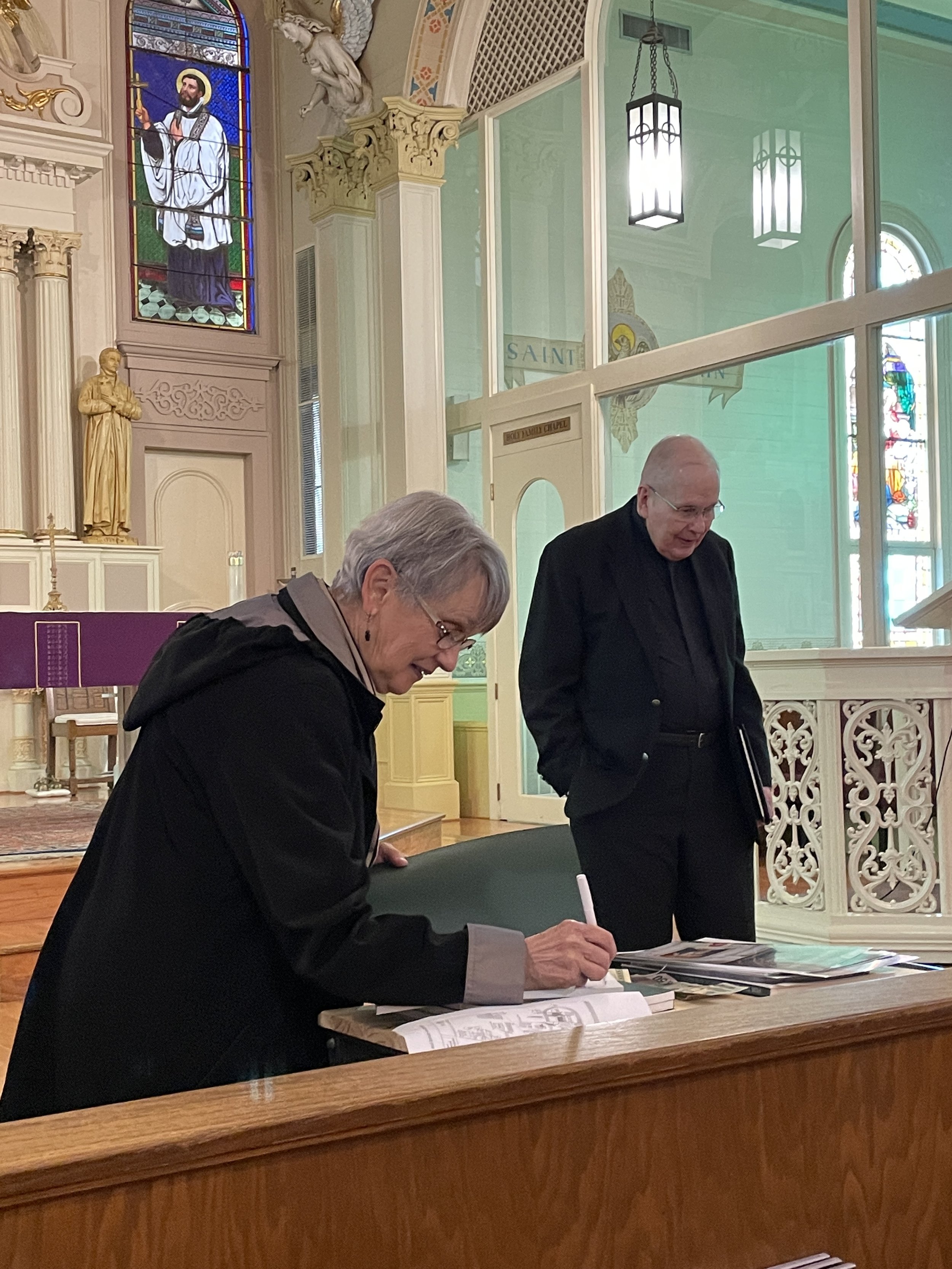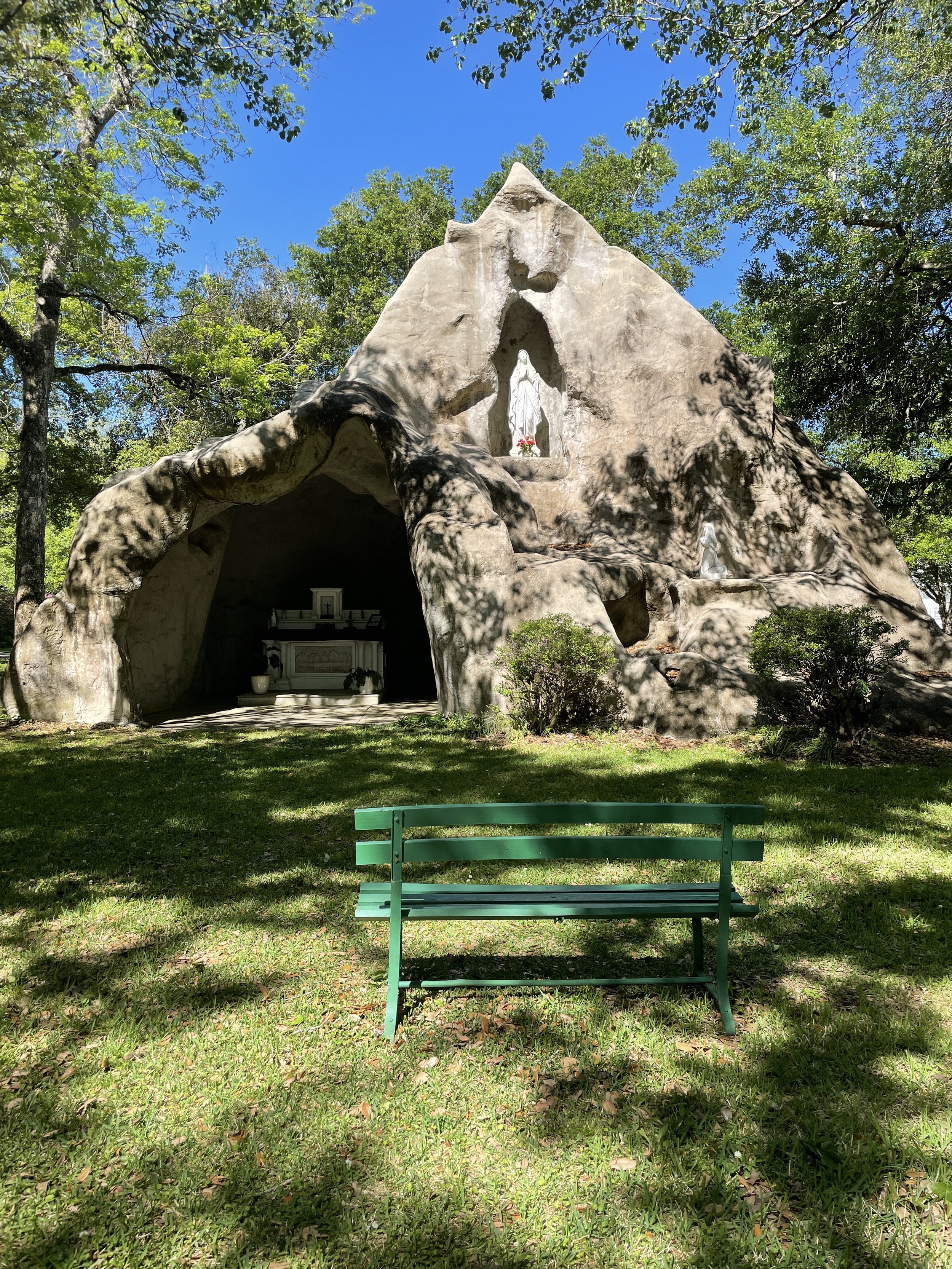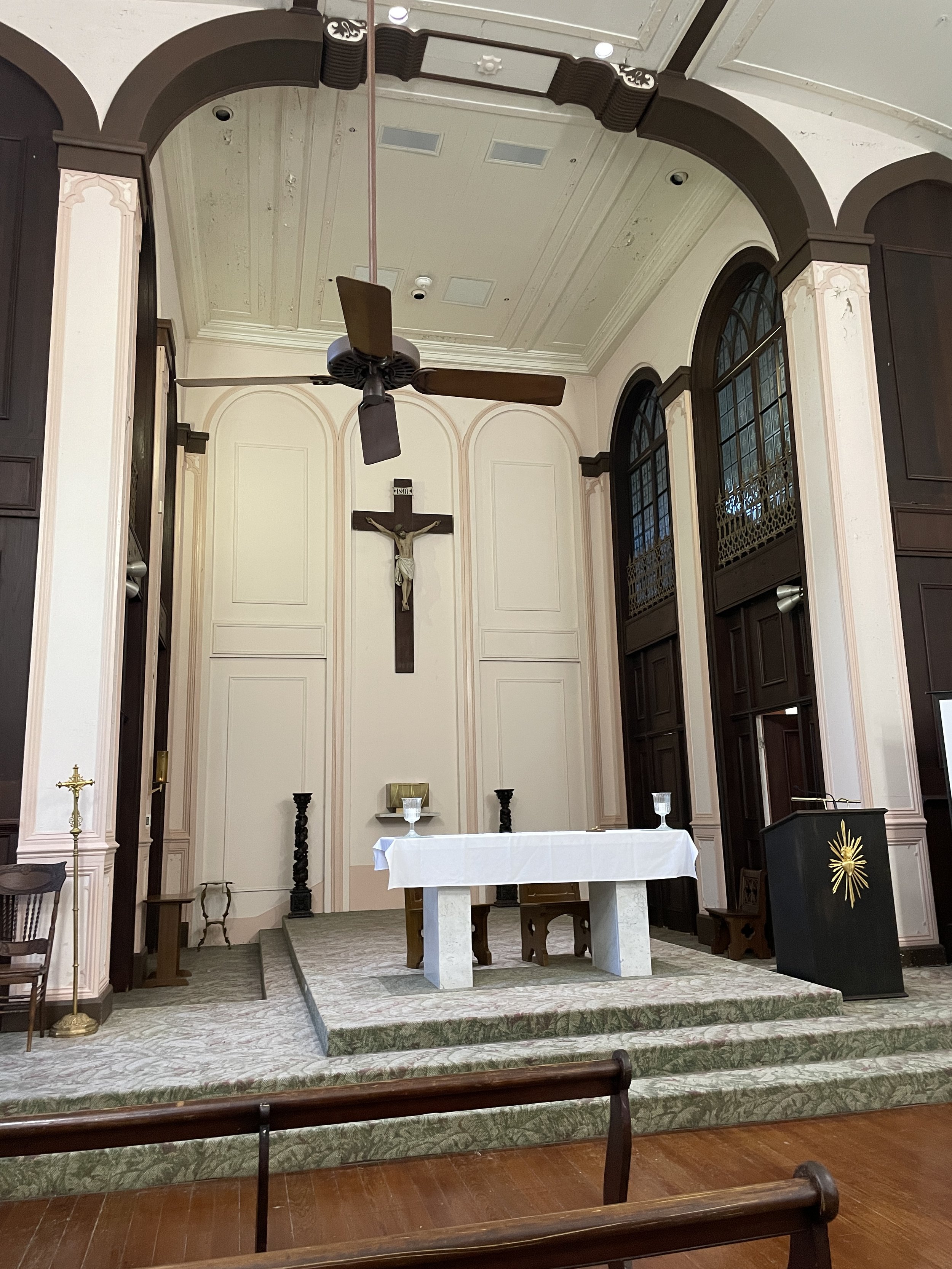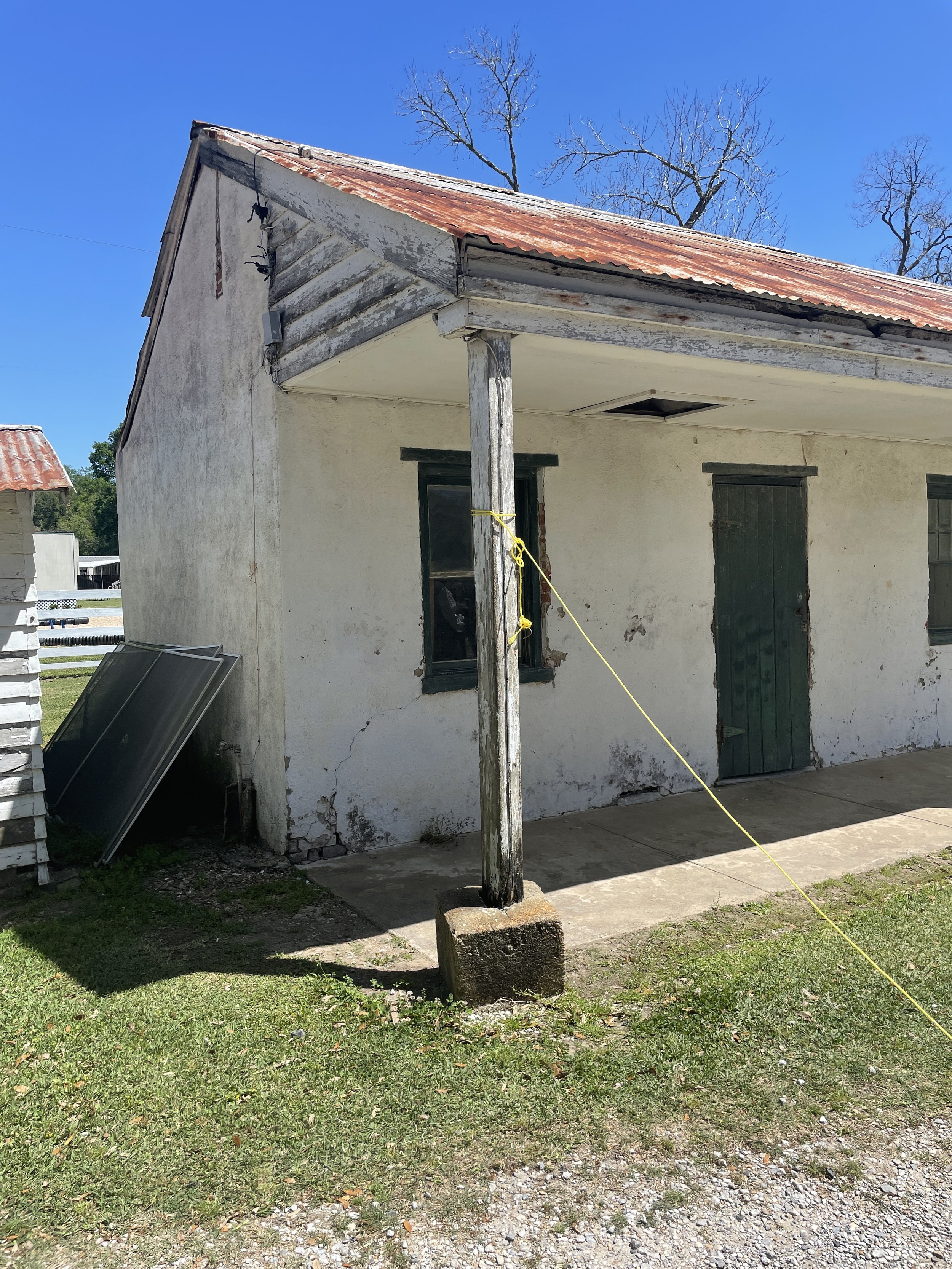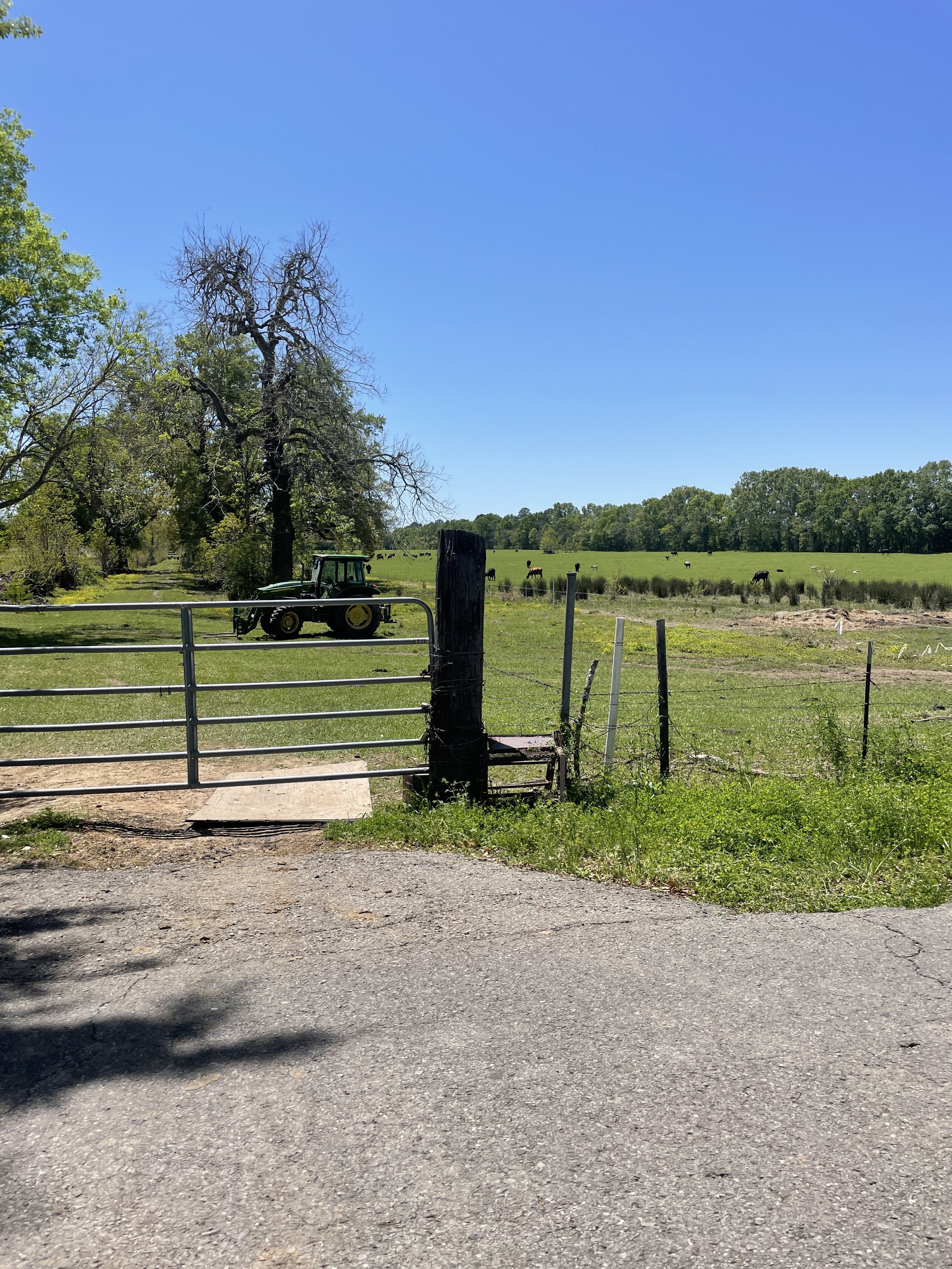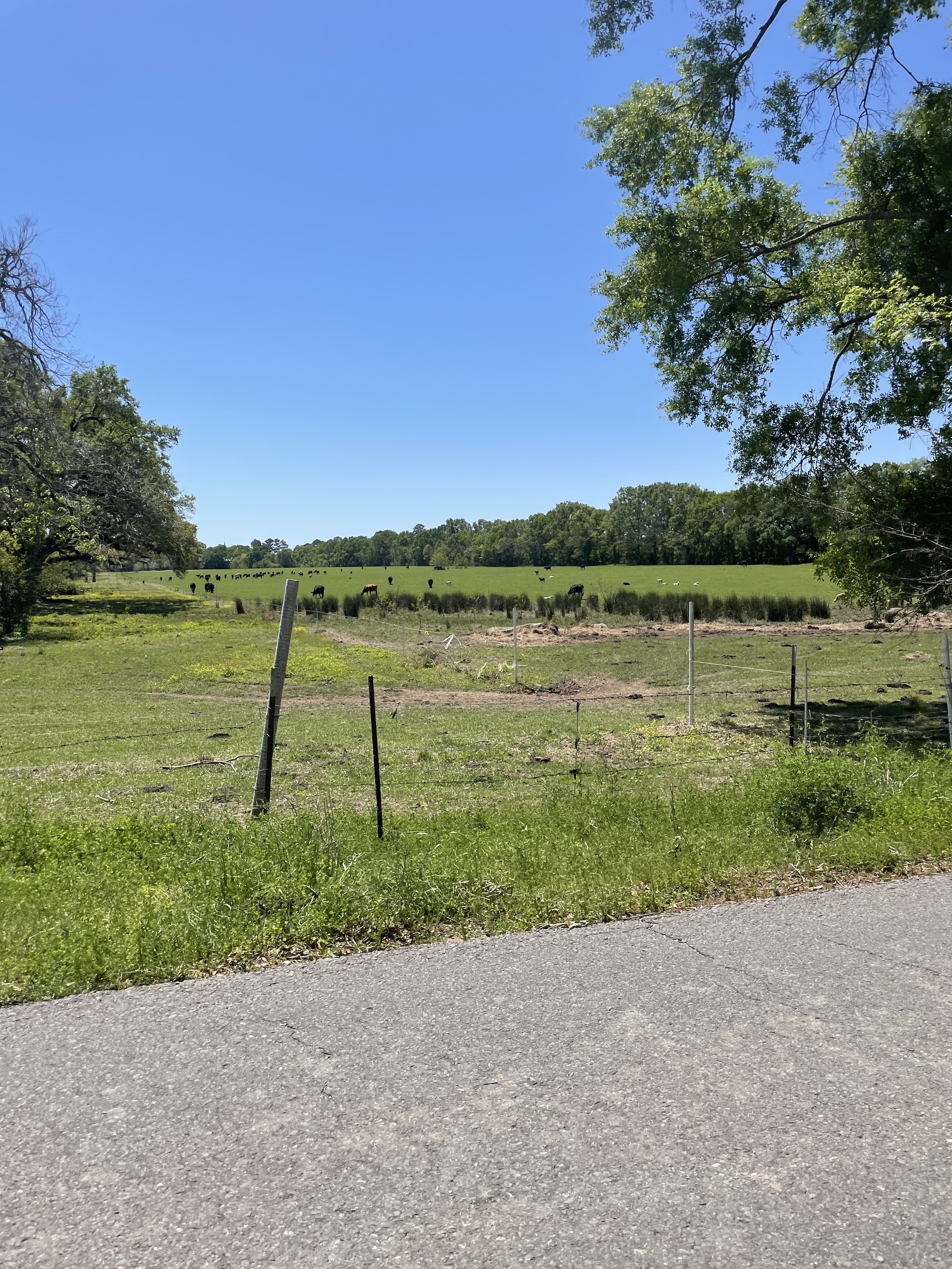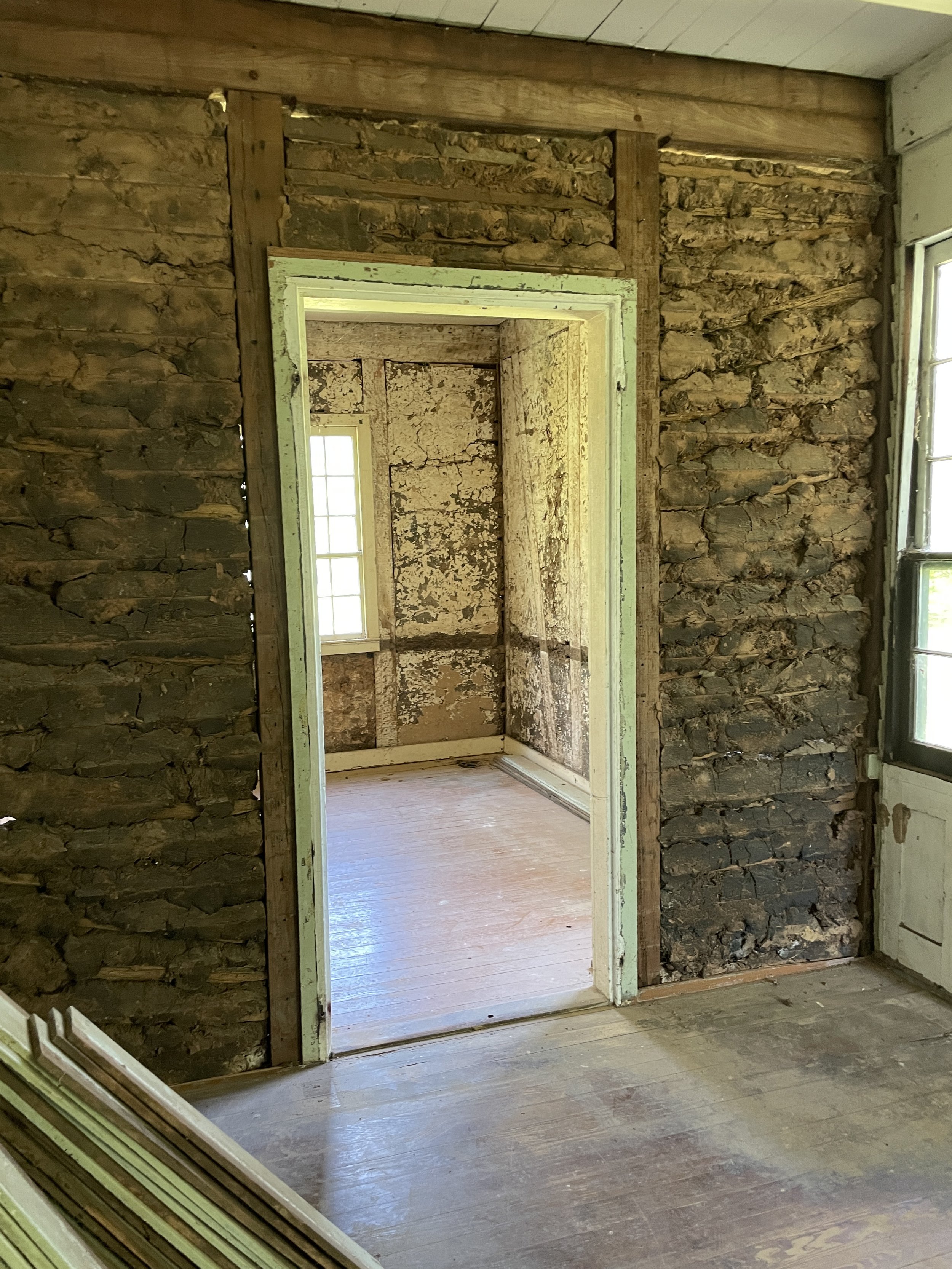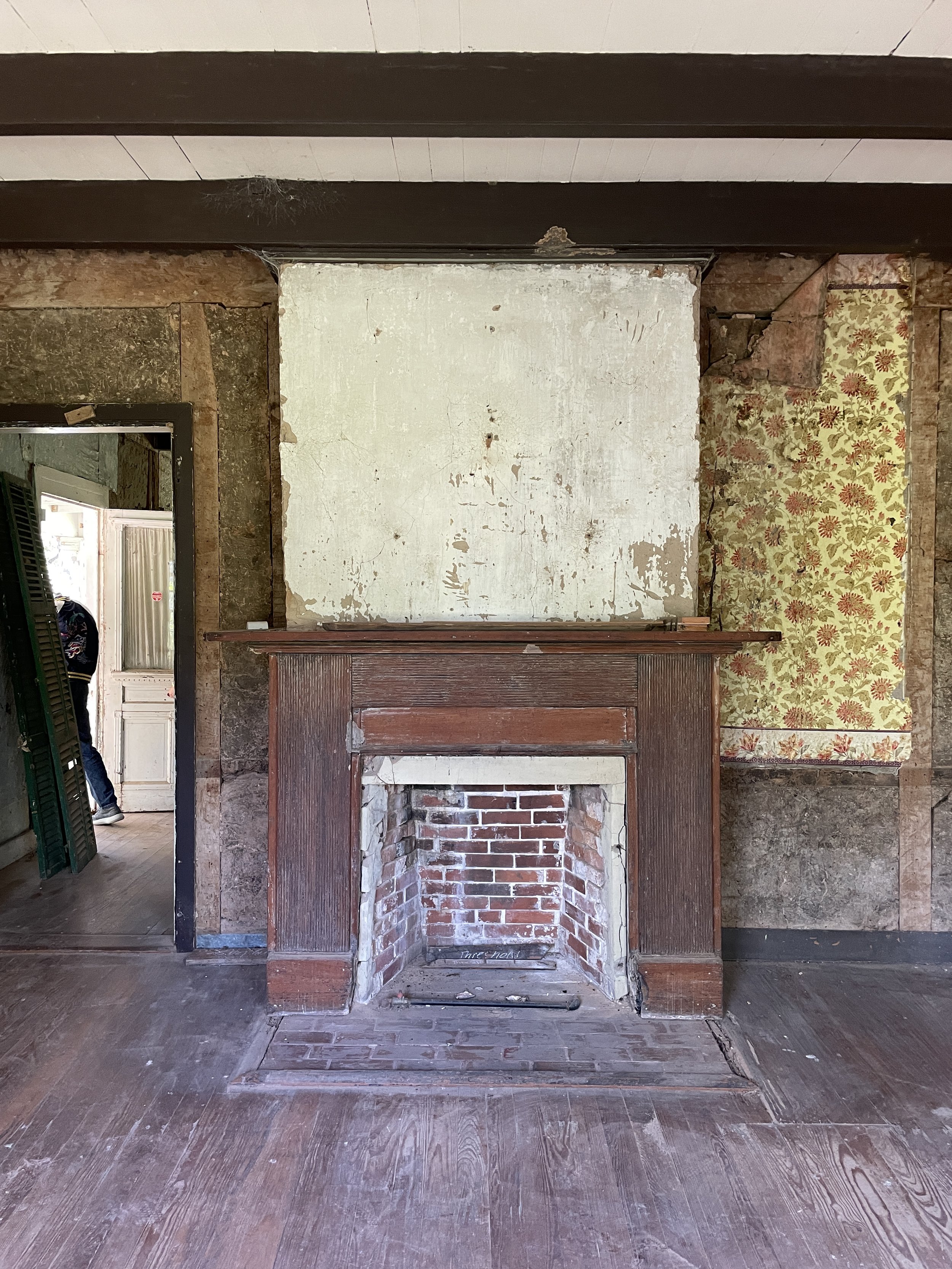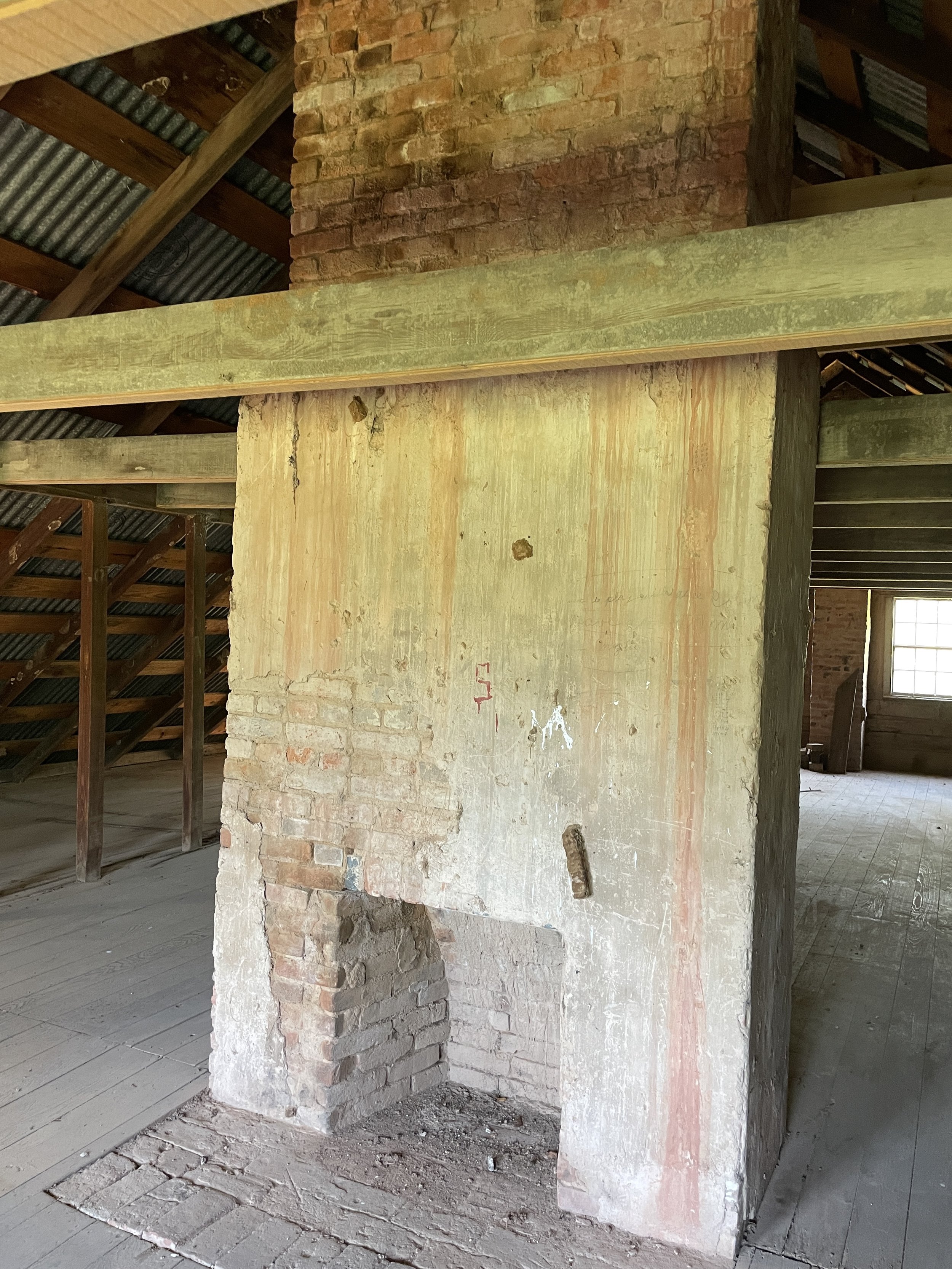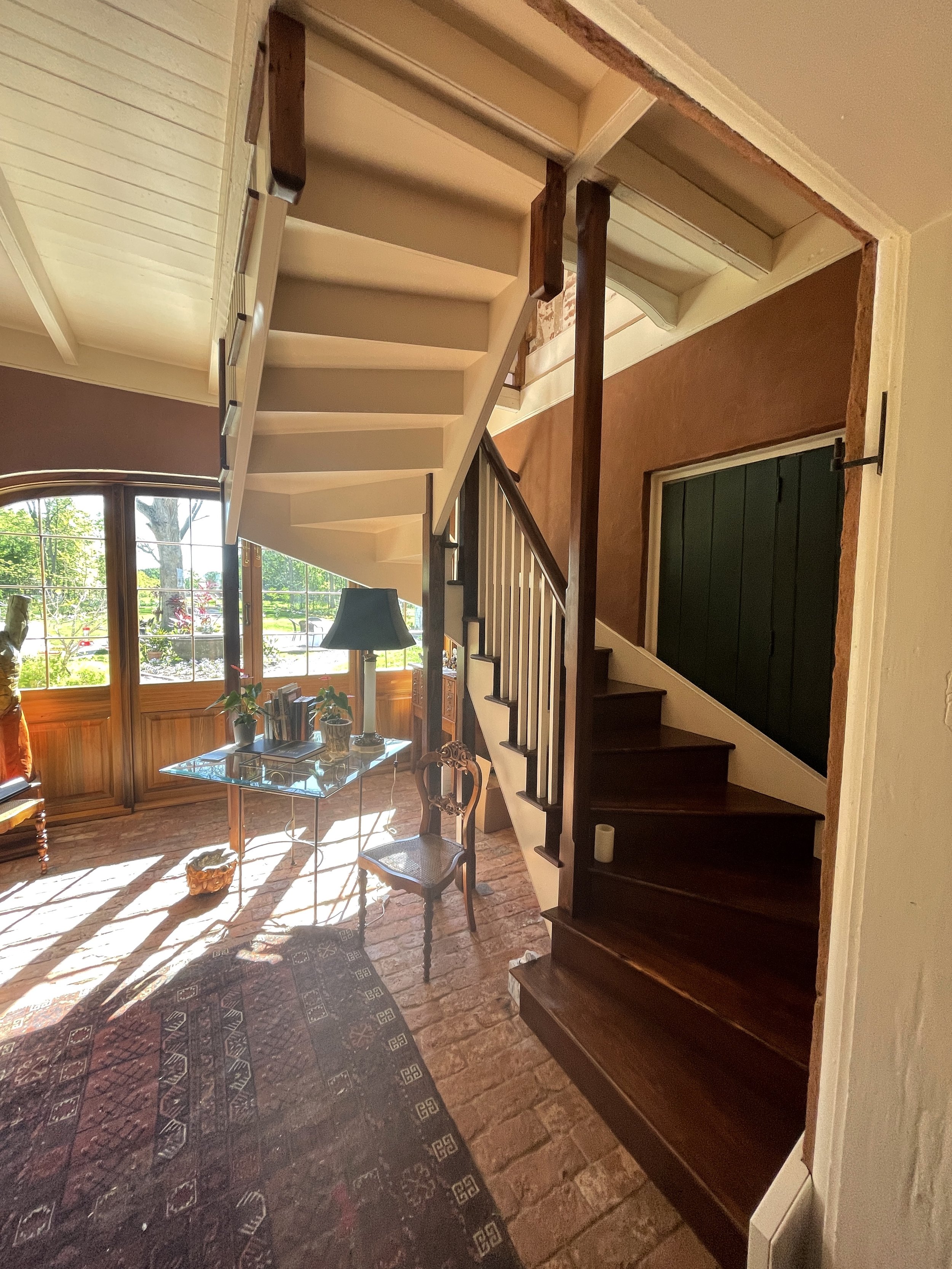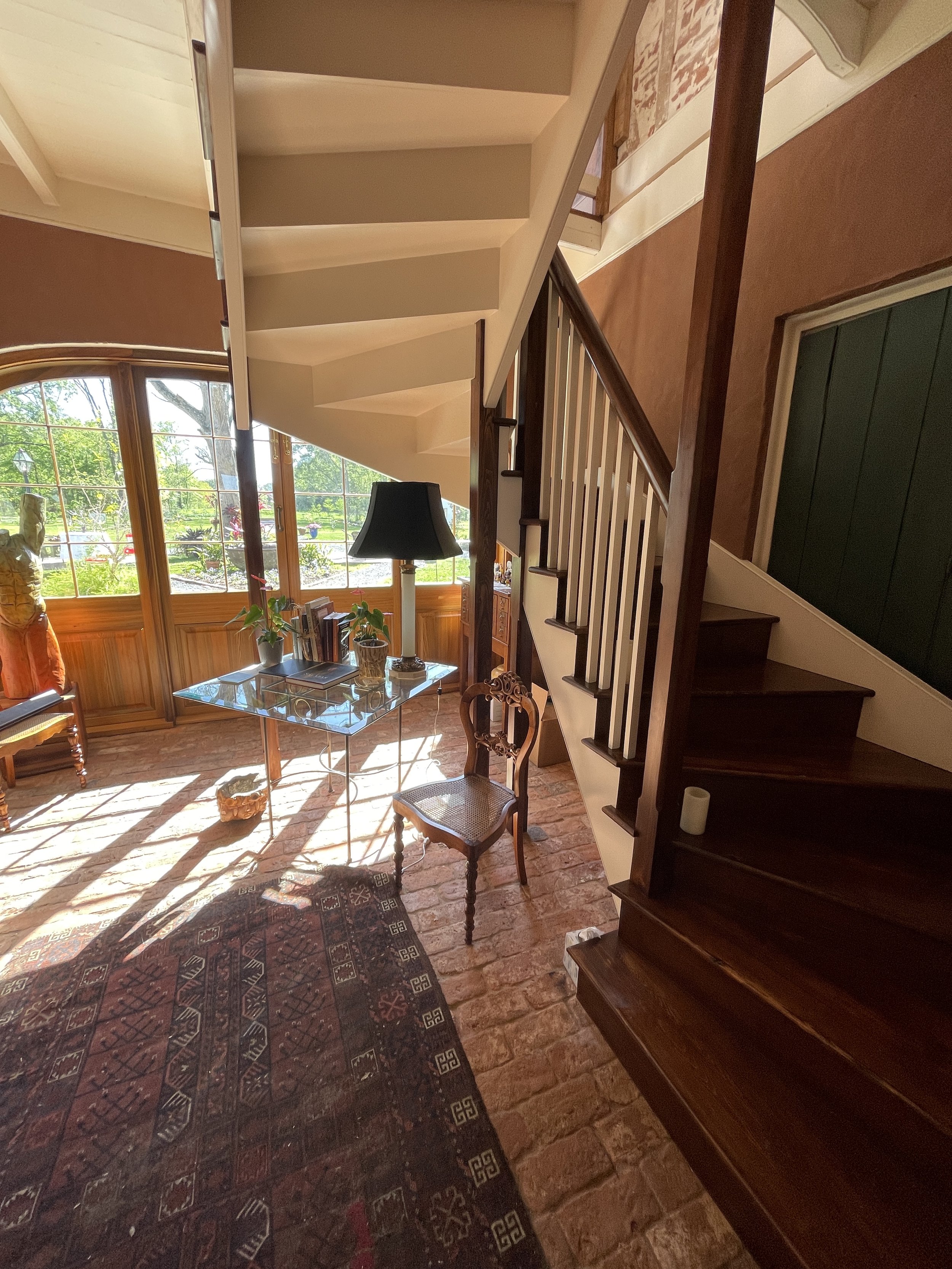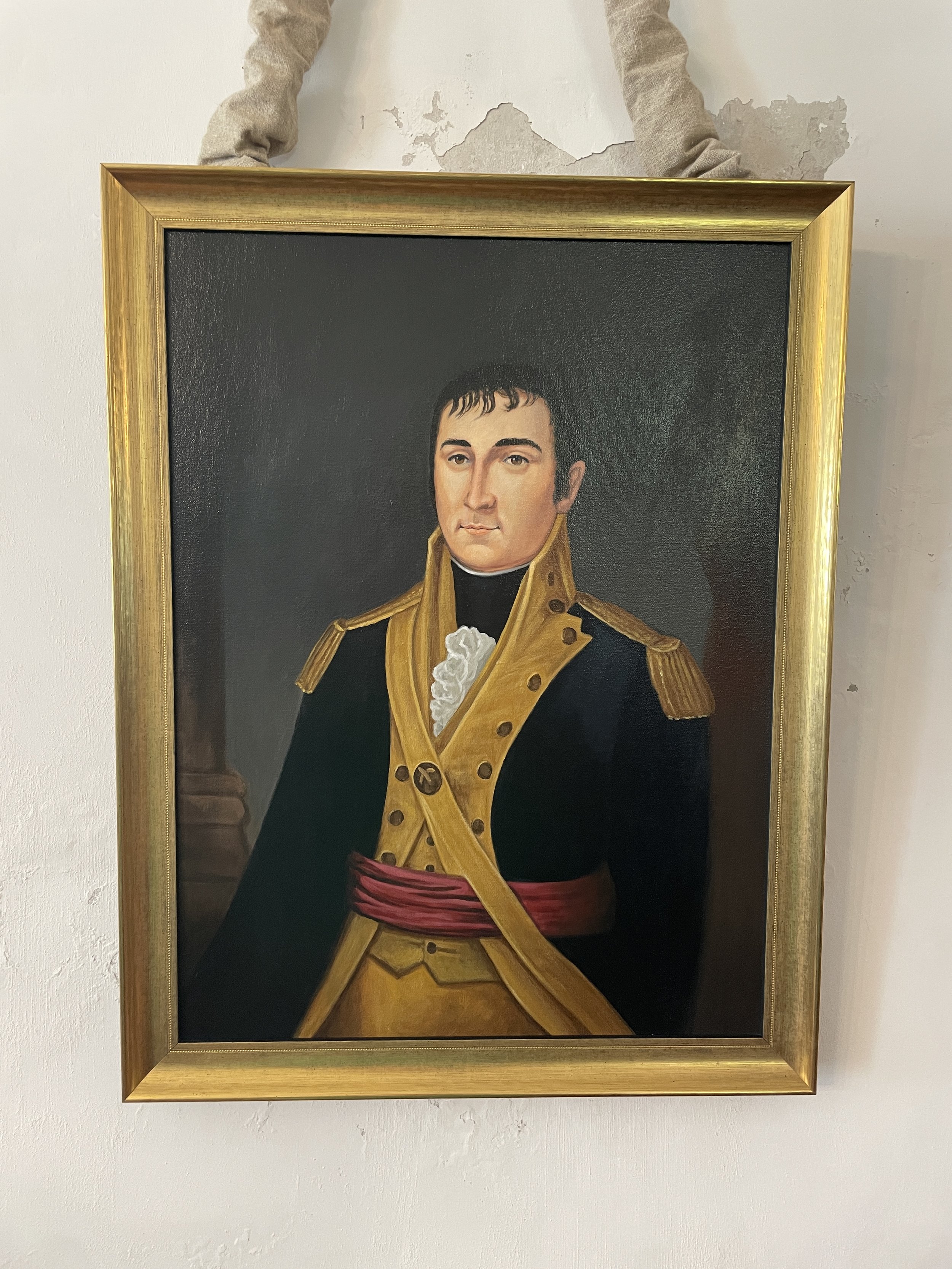I proudly served as the Chair for the Programs Committee of the ICAA-LA! For our Spring 2022 Foray, we organized a tour of classically inspired buildings in Grand Coteau, with special private tours of local historic architecture.
Hosted by the Institute of Classical Architecture & Art - Louisiana Chapter for our Spring 2022 Foray, the "Spiritual Influence of Classical Architecture & Art in Grand Coteau" was held with great attendance and enthusiasm on Saturday, April 9, 2022 in Grand Coteau and Arnaudville, Louisiana. Throughout the day we visited classically-inspired buildings such as the St. Borromeo Catholic Church, St. Charles College, the Academy of Sacred Heart and private historic homes.
Once here, the quaintness of this place, its atmosphere of serenity and even divinity, thoroughly enchanted us, and educated us on this highly significant place in Louisiana for over 175 years. We have prepared two Jesuit priests and several scholars to give primary source tours and lectures at over a half dozen locations. These orations provided history of the people, architecture, renovations, and artistic development of the St. Borromeo Catholic Church, St. Charles College, the Academy of Sacred Heart, Robin Plantation and Stéphanie Plantation.
Our event was an approved course for 6 AIA CES Learning Units|Elective!
Thank you to our Major Sponsor: HUB City Ford!
St. Charles Borromeo Catholic Church (1879)
ABOUT: St. Charles Borromeo Parish was established in 1819 and is the third oldest parish in the Diocese of Lafayette. It is pre-dated only by St. Martin de Tours Church in St. Martinville and St. Landry Church in Opelousas. The main part of the church was finished in 1879. The rear Second Empire addition of the bell tower was added in 1886. Stained glass windows had been added in the 1940s. Each window depicted real people, and the 12 promises of God.
FORAY EVENT: Tour of the Jesuit compound: St. Charles Borromeo Church and Cemetery. Father Jim Bradley, S.J., St. Charles College Historian, and Father Mark Kramer, S.J., Pastor of St. Charles Borromeo Church, gave a historic overview of Jesuit history in Grand Coteau. Bonnie Taylor Barry, author of “ For the Greater Honor and Glory of God: A History of the Building of St. Charles Borromeo Catholic Church of Grand Coteau, Louisiana and a Study of Its Furnishings” (1987) also gave a wonderful lecture on the symbology of the church’s architectural decoration, and significance to the local people who built it!
St. Charles College (1909)
ABOUT: St. Charles College was the first Jesuit college established in the American South. In 1837, the Jesuit Fathers were entrusted with the Parish of St. Charles Borromeo in Grand Coteau; they were French-speaking priests well-suited for a pastoral mission to French-speaking Catholics. Simultaneously, they founded St. Charles College. The original building burned down in 1907, and this massive brick structure replaced it in 1909.
FORAY: Self-walking tour of the Jesuit compound including St. Charles College and Grotto.
Academy of the Sacred Heart (1830)
ABOUT: The Academy was established in 1821 and is the second oldest institution of learning west of the Mississippi. It is a girls' school, with residential accommodations for students in grades nine through twelve. It is operated independently within the Roman Catholic Diocese of Lafayette. Its brother school is Berchmans Academy for boys, founded in 2006.
Built in several sections, the Academy has some fine Federal and Greek Revival details and features, i.e. the doorways, the dormers, and the pedimented end wings. The Academy is mainly noteworthy for its size. It is one of the largest Pre-Civil War institutional buildings in the state. In addition its three-story, twenty-two bay cast iron colonnade is very probably the largest Victorian cast iron gallery in the state.
FORAY: Upon arriving at the Academy of the Sacred Heart, Caroline Richard, Society of the Sacred Heart, gave a tour of the compound which included the original school, additions, chapel, slave quarters and laundry house, barn, and gardens. We enjoyed a catered boxed lunch out on the grounds provided by Brent’s Catering, sponsored by St. Landry Parish Tourist Commission.
NUNU Arts and Culture Collective (2005)
ABOUT: What is today the NUNU Arts and Culture Collective, was at first a 2005 business venture by visual artist George Marks and his nephew Jeremy Rivette. A means to create studio work space while establishing a venue for the promotion of local art. That it would become a generator of creative placemaking, a lodestone of Louisiana French language and culture, inspire a rural art movement and prove itself to be an economic development driver, was unseen and unexpected.
FORAY: We gathered at the salon, and reviewed art work at the NUNU Art and Culture Collective. Complimentary coffee, hot tea, cold tea, and water was sponsored by the Kitchen Shop and the NUNU Arts and Culture Collective. The Interim-Director George Marks, a contemporary visual artist and social sculptor living and working in Arnaudville, La., gave us a wonderful tour and overview of NUNUs past, present collections and future endeavors! George’s body of work, influenced by an innate appreciation for the natural and evolving world, includes collections of images reflective of textures, colors and surfaces experienced.
Robin Plantation House (c. 1825)
ABOUT: The Robin House and Barn stand on rural acreage on the east bank of Bayou Teche in lower St. Landry Parish. The closest towns are Leonville, situated a few miles to the north of the home, and Arnaudville, located to the south and just across the line in neighboring St. Martin Parish. Both buildings are one-and-one-half stories tall and of frame construction. The house combines French Creole and Greek Revival style features; the barn is also an example of the French Creole building tradition. The house is being dated to c. 1835 and the barn to c. 1820.
The Robin House is of local architectural significance within St. Landry Parish because it is a rare surviving French Creole houses in a parish where once they would have been quite numerous. It is particularly important because of its bousillage construction and because it is a typical small-to-medium French Creole house. The Robin Barn is significant at the state level in the area of architecture because, as an example of an antebellum barn, it is a rare survivor of a utilitarian building type which would have existed on every plantation and farm throughout the state. It is also significant at the state level because it is a very rare example of the application of the French Creole building tradition to a barn.
FORAY: At our visit to Robin Plantation house and barn, architect Eddie Cazayoux gave an overview of the renovation and has his HABS drawings on display!
Stéphanie Plantation (1796)
ABOUT: Stéphanie Plantation, otherwise known as the Stéphanie-Martin Duralde House, was constructed by Martin Milony Duralde in 1796. Duralde was the commandant at the Opelousas Post from 1795 to 1803, and a leading political figure in southwestern LA during the last years of the Spanish Colonial Era. Duralde occupied and developed a 1,423 acre tract along the Upper Teche by 1781. He served as senator for the Attakapas in 1912. Clarissa, his daughter, married W. C. C. Claiborne in 1806. Today, the house is a Bed and Breakfast known as Maison Stéphanie and sits on 20 acres along Bayou Teche.
FORAY: We drovee to Stéphanie Plantation south of Arnaudville. Architect Eddie Cazayoux gave an overview of the renovation and have his HABS drawings on display! Eddie received a Charles E. Peterson Prize from the US Department of the Interior on the drawings.
Bayou Teche Brewing
ABOUT: Bayou Teche Trap Room & Beer Garden was founded on this simple dream: to craft beers that complement the cuisine and lifestyle of Cajuns and Creoles. Open Thursday through Sunday. Fresh draft & packaged beer, awesome Cajun Saucer Wood Fired Pizza- Neapolitan style pizzas made with love and devotion. Bayou Teche Brewing Taproom is family friendly and pet friendly- located in scenic Arnaudville, LA.
FORAY: Bayou Teche Brewing was a sponsor for our event! We ended the day with cold beers and delicious food in the courtyard. A Cajun French band was playing under a pergola, and the sun was setting over the beautiful tree-lined horizon.
At the end of the course, participants were taught to:
1) Identify religious symbolism in the Jesuit and Sacred Heart religious orders.
2) Recognize classical art in Catholic structures.
3) Identify local religious and residential building materials in southern Louisiana dating from 1796 to 1909.
4) Recall proper renovation techniques of antebellum structures.









